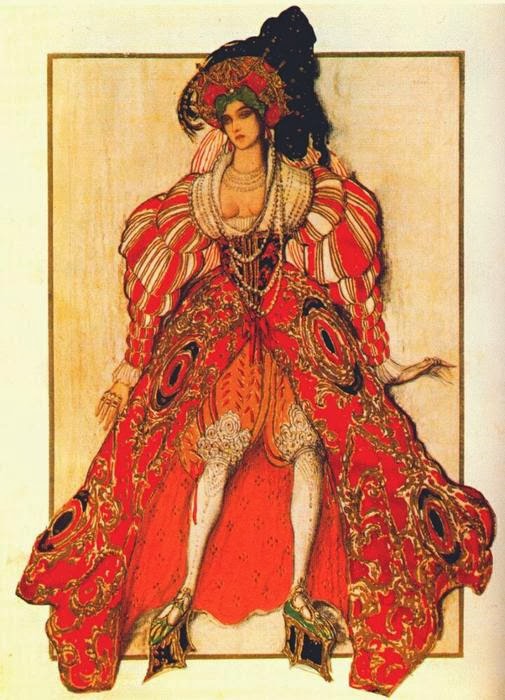For introducing the famously high standards of classical ballet in Russia for western Europe.
For combining eastern tradition of storytelling with classical ballet.
For sensational superstars of dance such as Vaslav Nijinsky and Anna Pavlova
(and the sensational dessert named after her)
For raising status of male dancers, who had been overlooked in dance.
And for me personally the most important thing; the way to approach a performance as an artistic entirety which was was born from seamless coalition between artist of different fields. The composers, choreographers and dancers would work together with the designers, who also were famous for their work. The stage- and costume design was not subordinate to dance or music. It was inseparable part of the performance and equally contemporary as other elements of the performance.
The group's artistic director Sergei Diaghilev came from St. Petersburg upper class social elite and was introduced to a group of artists known as Nevsky Pickwickians through his cousin in 1890. Ballets Russes was his vision, and he would use his contacts in the art scene as well as in the social elite to create the company. In Ballets Russes most contemporary artists and designers of the period (Stravinsky, Debussy, Ravel, Picasso, Matisse, Chanel...) would come together along with the most talented Russian choreographers and dancers.
Painter Léon Bakst was an original member of the Nevsky Pickwickians group and one of the most influential designers of Ballets Russes. Ballets Rousses redefined the dance costume. Bakst ballet costumes rejected the pretty and fluffy tulle dresses to empathize the expression and movement. Personally for me these Bakst designs are important because I think they represent what costume design is about: expression, not decoration. These designs are very corporal, full of movement, and yet they express the nature of the character as well as the overall concept of the performance. It's hard to believe these come from 1910's




















































